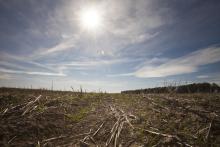Land Library Search
Through our robust search engine, you can search for any item of the over 73,000 highly curated resources in the Land Library.
If you would like to find an overview of what is possible, feel free to peruse the Search Guide.
/ library resources
Showing items 73 through 81 of 2010.Introduction. In the world, 33% of soils are degraded, and 2.9 million people are affected by land degradation, with problems associated with food security, conflicts over natural resources, and migration with different impacts on men or women.
Forage-based cattle systems play a key role in rural economies of developing countries in terms of food security and poverty alleviation, particularly in tropical Latin America.
Land degradation is a major obstacle to agricultural development in Africa,
where it’s accentuated by poor agricultural practices and climate change effects.
Restoration of degraded lands is crucial to prevent incursions into virgin and
In Sub-Sahara Africa agriculture is predominantly rainfed and faces several challenges due to unpredictable weather patterns and distribution that is amplified by climate change.
This presentation focuses on the global actions required to achieve Land Degradation Neutrality (LDN) through sustainable rangelands and pastoralism, aligning with the International Year for Rangelands and Pastoralists (IYRP) and its sub-working group on LDN.
In southern Africa, conservation agriculture (CA) has been promoted to address low agricultural productivity, food insecurity, and land degradation.
The CWANA (Central and West Asia and North Africa) region was once considered the birthplace of civilizations and played a significant role in sustaining ancient empires like the Romans through its agricultural productivity.
An IPCC Special Report on climate change, desertification, land degradation, sustainable land management, food security, and greenhouse gas fluxes in terrestrial ecosystems.
Informe especial del IPCC sobre el cambio climático, la desertificación, la degradación de las tierras, la gestión sostenible de las tierras, la seguridad alimentaria y los flujos de gases de efecto invernadero en los ecosistemas terrestres.


